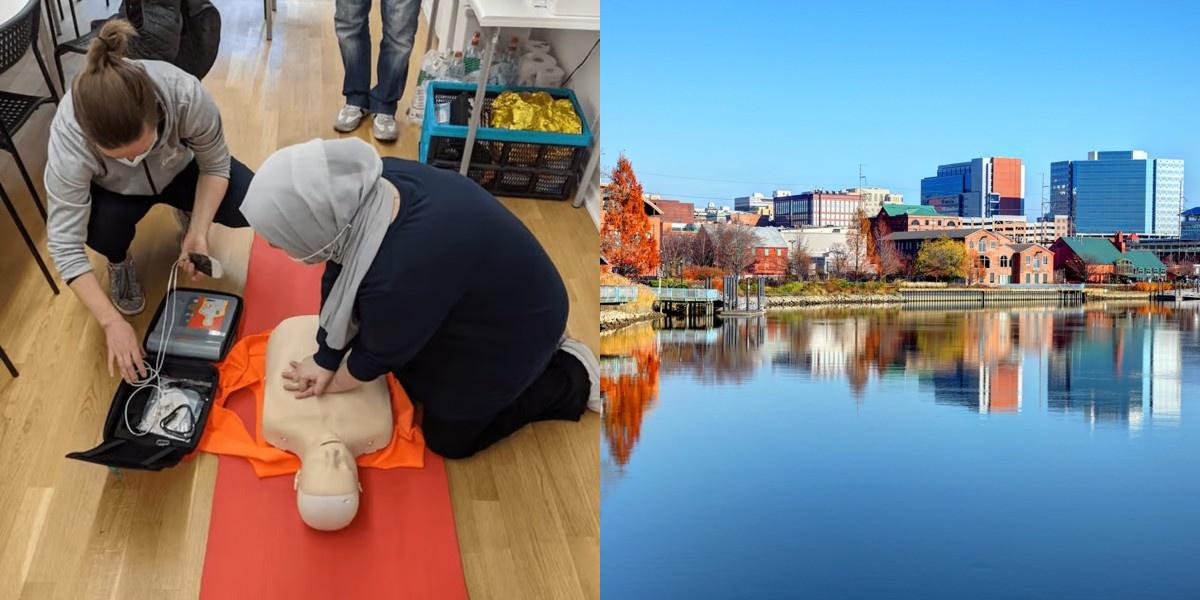What is a Paramedic?
A paramedic is a highly trained medical professional who provides emergency medical care to patients in critical situations. They are typically the first responders in emergency situations and play a crucial role in saving lives. Paramedics are trained to assess the patient's condition, provide immediate medical treatment, and transport them safely to a medical facility.
Some of the responsibilities of a paramedic include:
- Assessing the patient's condition and providing necessary medical interventions.
- Administering medications and intravenous fluids.
- Performing CPR and other life-saving techniques.
- Operating and maintaining medical equipment.
- Communicating with other healthcare professionals to provide the best possible care.
Where does a Paramedic work?
Paramedics work in a variety of settings, including:
-
Ambulance Services: Paramedics are commonly employed by ambulance services and respond to emergency calls. They work closely with EMTs (Emergency Medical Technicians) to provide immediate medical care and transport patients to hospitals.
-
Hospitals: Some paramedics work in hospital settings, particularly in the emergency department. They assist in providing advanced life support and critical care to patients.
-
Fire Departments: Many fire departments have paramedics as part of their team. These paramedics respond to emergency calls alongside firefighters and provide medical care when needed.
-
Air Medical Services: Paramedics may also work in air medical services, where they provide emergency medical care during air transportation of patients.
How to Become a Paramedic in Delaware?
To become a Paramedic in Delaware, complete an accredited Paramedic program (1-2 years), pass the NREMT exam for certification, and obtain state licensure through the Delaware OEMS. Seek Paramedic job opportunities in diverse settings like ambulance services and hospitals statewide.
What are the requirements to become a Paramedic in Delaware?
To become a paramedic in Delaware, you must meet certain education and legal requirements. These requirements include:
-
High School Diploma or GED: A high school diploma or equivalent is the minimum educational requirement to become a paramedic.
-
EMT Certification: Before becoming a paramedic, you must first become certified as an EMT. Delaware requires paramedic candidates to complete an approved EMT training program and pass the National Registry of Emergency Medical Technicians (NREMT) certification exam.
-
Paramedic Training Program: After becoming certified as an EMT, you will need to complete a paramedic training program. These programs are typically offered by community colleges or vocational schools and provide comprehensive education and training in advanced life support techniques.
-
Delaware State Exam: Upon completion of the paramedic training program, you must pass the Delaware State Paramedic Exam to obtain state certification.
-
Background Check and Drug Screening: Paramedics in Delaware are required to undergo a background check and drug screening as part of the licensing process.
How do I get my Paramedic certification?
Becoming a paramedic is a rewarding and fulfilling career choice for those who are passionate about helping others in times of medical emergencies. Paramedics are highly trained healthcare professionals who provide critical care to patients before they reach the hospital. If you are interested in pursuing a career as a paramedic, here are the steps you need to follow to get your paramedic certification:
1. Begin with education: Start your journey by completing an accredited paramedic training program, offered by community colleges, technical schools, or universities. These programs range from 6 months to 2 years, preparing you with essential skills in emergency medical care.
2. Attain Basic Life Support (BLS) certification: Before enrolling in a paramedic training program, acquire Basic Life Support (BLS) certification from organizations like the American Heart Association or American Red Cross. This certification teaches fundamental life-saving techniques such as CPR and AED use.
3. Pass the NREMT certification exam: After finishing your paramedic training, successfully pass the National Registry of Emergency Medical Technicians (NREMT) certification exam. This comprehensive test evaluates your proficiency in patient assessment, airway management, cardiac emergencies, and trauma care through both written and practical components.
4. Obtain state licensure: Obtain a state license to practice as a paramedic by meeting specific requirements set by your state's EMS regulatory board. This typically involves submitting an application, demonstrating your NREMT certification, and passing a state-specific exam or fulfilling other state-defined criteria.
5. Commit to continuing education: Maintain your paramedic certification and licensure by fulfilling continuing education requirements mandated by your state. Stay current with advancements in emergency medical services through workshops, conferences, online courses, or other approved educational activities to uphold high standards of patient care and professional competence.
How do I get a job as a Paramedic?
After obtaining your paramedic certification and state licensure, you are now ready to start your career as a paramedic. Here are some steps you can take to increase your chances of getting a job as a paramedic:
1. Gain experience: Begin by gaining experience in the field of emergency medical services. Volunteering or working as an emergency medical technician (EMT) will provide valuable hands-on experience in delivering medical care under pressure. This practical experience not only enhances your skills but also makes you a more competitive candidate for paramedic positions.
2. Network within the field: Networking plays a crucial role in finding paramedic job opportunities. Attend local EMS conferences, join professional organizations like the National Association of Emergency Medical Technicians (NAEMT), and connect with other healthcare professionals and paramedics in your area. Building these relationships can lead to job referrals and recommendations.
3. Begin the job search: Start your job search by exploring job boards and websites dedicated to healthcare and emergency medical services. There are various websites that often list paramedic job openings. Additionally, reach out to hospitals, ambulance services, and fire departments directly to inquire about job vacancies.
4. Prepare your resume: Craft a well-written resume that highlights your paramedic certification, state licensure, education, work experience, and any additional certifications or specialized training. Tailor your resume for each job application, emphasizing relevant skills and experiences that align with the requirements of the position you are applying for.
5. Prepare for the interview: Once you secure an interview, thorough preparation is key to making a positive impression. Research the organization, familiarize yourself with common paramedic interview questions, and practice your responses. Dress professionally, arrive early, and bring copies of your resume, certifications, and other pertinent documents.
6. Continuing education: Stay competitive in the job market by pursuing ongoing education and additional certifications. Consider specializing in areas such as critical care, pediatric care, or trauma care to expand your skill set and enhance your career prospects as a paramedic. Continuing education demonstrates your commitment to professional development and can open doors to advanced paramedic roles.
Career Paths and Opportunities after Becoming a Paramedic
Becoming a paramedic opens up a wide range of career paths and opportunities within the field of emergency medical services. Here are some potential career paths you can explore after becoming a paramedic:
-
Emergency Medical Services (EMS) Supervisor: As an EMS supervisor, you will be responsible for overseeing a team of paramedics and EMTs, ensuring that they provide high-quality care to patients and comply with all relevant protocols and regulations. This role requires strong leadership and organizational skills.
-
Flight Paramedic: Flight paramedics provide critical care to patients who require air medical transport. They work in helicopters or fixed-wing aircraft and are trained to handle a wide range of medical emergencies in challenging environments. Becoming a flight paramedic often requires additional training and certification.
-
Emergency Room (ER) Technician: Some paramedics choose to work in hospital emergency rooms as ER technicians. In this role, you will assist doctors and nurses in providing care to patients, performing tasks such as starting IV lines, administering medications, and assisting with procedures.
-
Community Paramedicine: Community paramedicine is an emerging field that focuses on providing healthcare services to underserved populations and reducing unnecessary emergency department visits. Community paramedics work closely with primary care providers and other healthcare professionals to provide preventive care, chronic disease management, and other non-emergency services.
-
Educator/Instructor: If you enjoy teaching and sharing your knowledge with others, you can pursue a career as a paramedic educator or instructor. In this role, you will be responsible for training and educating future paramedics and EMTs.
-
Specialized Teams: Some paramedics choose to join specialized teams, such as tactical paramedic teams, search and rescue teams, or disaster response teams. These teams require additional training and often work in high-stress and high-risk environments.
-
Career Advancement: With experience and further education, paramedics can pursue career advancement opportunities, such as becoming a paramedic supervisor, EMS director, or even a healthcare administrator.
It is important to note that career opportunities and paths may vary depending on the region and specific requirements of the healthcare system. It is always a good idea to research and explore the options available in your area.




